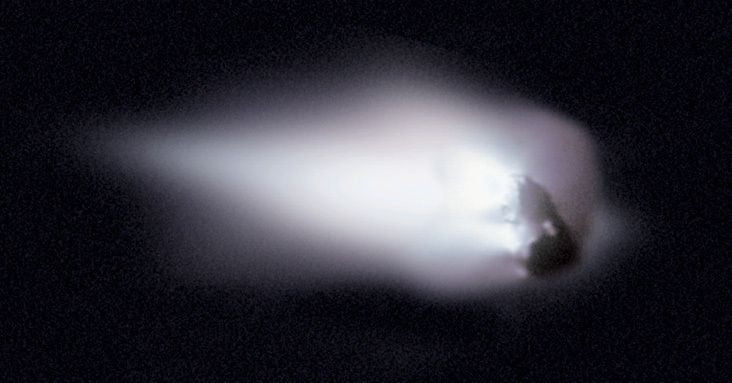Approaching Comet Atlas Might Be Fragmenting, Astronomers Reveal

KEY POINTS
- Comet ATLAS was first discovered in December 2019
- The comet will approach Earth in May
- Astronomers believe the comet is fragmenting
Astronomers revealed that the massive comet that’s approaching Earth might be breaking apart. According to their data, the comet, which could be bright enough to be spotted by the human eye, is starting to fade.
The comet known as C/2019 or ATLAS caught the attention of astronomers from around the globe shortly after its discovery in December last year. Based on their observations, the comet’s brightness has been increasing.
Through the Asteroid Terrestrial-impact Last Alert System (ATLAS) observatory in Hawaii, astronomers were able to monitor the approaching comet. According to the astronomers, the comet’s unusual brightness was caused by the massive atmospheric cloud surrounding it. The astronomers estimated that the cloud around ATLAS has a diameter of about 720,000 kilometers.
Due to its brightness and the size of the cloud, astronomers believe that the comet will be visible to the human eye when it reaches its closest distance from Earth, which is expected to happen in May. According to the astronomers’ data, the comet is expected to approach the planet from 73 million miles away.
Unfortunately, the comet’s current status might make it impossible to spot the space rock during its near-Earth approach. Based on the latest data collected by the astronomers, comet ATLAS’ brightness has started to decrease. They believe that this could be a sign that the comet is going through certain physical changes that are causing it to fragment.
Karl Battams of the Naval Research Lab in Washington DC noted that there’s a chance that the comet might completely break apart before it reaches the Sun. Also, ATLAS’ trajectory might change due to the surface emissions triggered by its fragmentation.
“It's possible that this is the beginning of the end,” Battams said according to SpaceWeather.com. “The comet's orbit is now being influenced by 'non-gravitational' forces. These forces are the result of gases lifting off the comet nucleus and causing the nucleus to move very slightly in the opposite direction--sort of like a jet engine.”
Battams noted that ATLAS itself is a massive fragment that came from another space rock known as the Great Comet of 1844, which was first spotted on Dec. 18 of that year, according to the Astronomical Journal.
Since the original comet fragmented, Battams said that it wouldn’t be a surprise of comet ATLAS went through the same physical change.
© Copyright IBTimes 2025. All rights reserved.





















